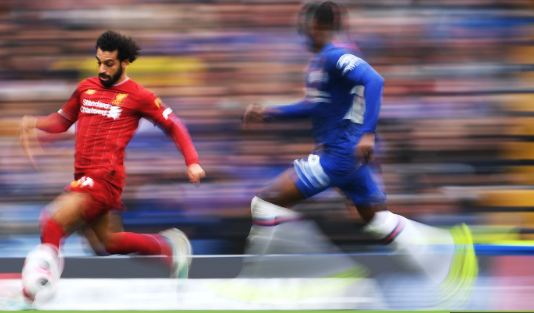🧵 The 5 Key Defensive Principles Every Team Needs to Master
Let’s break down the 5 core defensive principles that make great teams so hard to break down 👇
Let’s break down the 5 core defensive principles that make great teams so hard to break down 👇

Compact Shape (Horizontally & Vertically)
Defending starts with shape, not individual effort.
A compact team limits space between players, side to side and front to back.
Horizontally: reduce passing lanes through the middle.
Vertically: shrink the gap between defence, midfield, and attack.
The goal? Force play around you, not through you.
Compact teams look small to the opposition, but massive to each other.
Defending starts with shape, not individual effort.
A compact team limits space between players, side to side and front to back.
Horizontally: reduce passing lanes through the middle.
Vertically: shrink the gap between defence, midfield, and attack.
The goal? Force play around you, not through you.
Compact teams look small to the opposition, but massive to each other.
Goal Side & Ball Side. Move With the Ball.
Simple rule: stay between the ball and your own goal.
Being “goal side” means attackers have to go through you.
Being “ball side” means shifting together as the ball moves.
Watch elite defences, when the ball travels, the whole unit slides across in sync.
Simple rule: stay between the ball and your own goal.
Being “goal side” means attackers have to go through you.
Being “ball side” means shifting together as the ball moves.
Watch elite defences, when the ball travels, the whole unit slides across in sync.
Delay. Slow Down & Make Predictable.
You can’t always win the ball, but you can always control how the opposition attacks. When you delay, you:
Slow down the opponent’s tempo.
Give teammates time to recover shape.
Force predictable decisions (backwards or wide passes).
The best defenders don’t dive in, they delay, angle, and dictate.
You can’t always win the ball, but you can always control how the opposition attacks. When you delay, you:
Slow down the opponent’s tempo.
Give teammates time to recover shape.
Force predictable decisions (backwards or wide passes).
The best defenders don’t dive in, they delay, angle, and dictate.
Press on Trigger.
Don’t press all the time. Press when the moment is right.
A poor first touch. A backwards pass. A player receiving with their back to goal.
Those are your pressing triggers.
When one goes, everyone goes as a unit.
A well-timed press turns defence into attack instantly.
Don’t press all the time. Press when the moment is right.
A poor first touch. A backwards pass. A player receiving with their back to goal.
Those are your pressing triggers.
When one goes, everyone goes as a unit.
A well-timed press turns defence into attack instantly.
Press, Cover, Balance.
These are the defensive relationships that make the system work.
Press: The first player engages the ball.
Cover: The second supports, ready to win second balls or block passing lanes.
Balance: The rest maintain the team’s shape behind.
It’s like a triangle around the ball. Pressure, support, and security.
Every defender’s decision fits into one of those three roles.
These are the defensive relationships that make the system work.
Press: The first player engages the ball.
Cover: The second supports, ready to win second balls or block passing lanes.
Balance: The rest maintain the team’s shape behind.
It’s like a triangle around the ball. Pressure, support, and security.
Every defender’s decision fits into one of those three roles.
Great defending is collective intelligence, not chaos.
It’s communication, movement, and trust.
It’s making 100 tiny decisions that lead to one big outcome. Keep the ball out of the net.
Defending isn’t reactive, it’s proactive control.
It’s communication, movement, and trust.
It’s making 100 tiny decisions that lead to one big outcome. Keep the ball out of the net.
Defending isn’t reactive, it’s proactive control.
• • •
Missing some Tweet in this thread? You can try to
force a refresh











